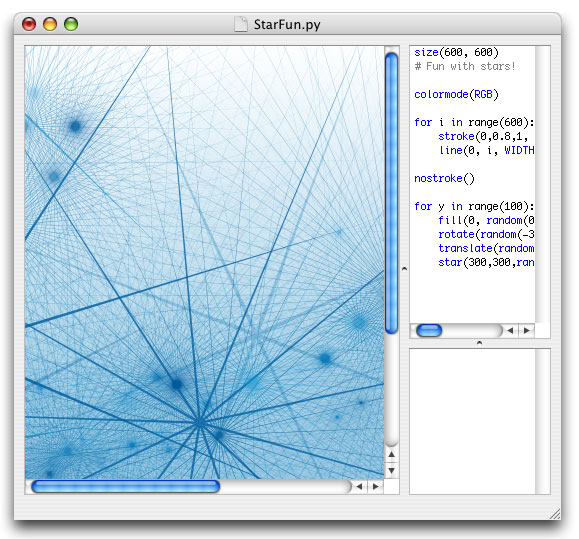

Yet within these tight constraints and a simple language he is able to create a wide range of effects.įor most of my work in NodeBox I have placed myself under similar constraints: typically a square canvas (exported at 1080 by 1080) and, for MP4 animations, no more than 750 frames (30 seconds at 25 frames per second). In this book he confines himself to a canvas of 100 x 100 points, with each point having a grayscale value between 0 and 100.

I have long believed in the power of constraints to channel creative work and was inspired by the constraints in John Maeda's Design By Numbers. I returned to my roots and began creating new generative art pieces using NodeBox. The research institute running the forum asked me to become the forum administrator and I've been happily volunteering there ever since. NodeBox forum, learning and helping others. While at a visualization conference in Boston I attended a lecture by the inventor of NodeBox, a visual language designed to create generative art.
#NODEBOX ART SOFTWARE#
Then I married and raised a daughter, became a software developer, then a user experience designer and researcher, and eventually an inventor (6 patents), data visualization expert, and Senior Design Architect at Oracle Design. Meanwhile I became a student (degrees in Computer Science, Psychology, and a Masters in English), a teacher, a researcher, a writer, a hermit (five years in a cottage on Montana's Continental Divide). I didn't think of myself as a generational artist at the time, but ultimately I was striving to share my visions with other people.
#NODEBOX ART SERIES#
The Starmaze, a decades-long project to translate a 9-dimensional mathematical structure into a series of 2D and 3D images and animations. In grad school in the 1980s I was sometimes invited to parties where I used a sound board to turn music into shifting shapes and colors - a brief foray into performance art.Ībout this time I started work on what I called I couldn't explain, even to myself, what I was doing or why. One piece, which I entitled "Frog Closures", left my contemporaries scratching their heads. The original vector art is done by Ludivine Lechat.Hi! I am John Cartan, a generative artist.Īs a teenager in the late 70s, long before I ever heard the term.
#NODEBOX ART CODE#
Part of the code for this algorithm is over at the SVG library page. Here, each path is modified with a furry pathfilter.

All of the vector data is transformed to standard NodeBox paths, so it is possible to manipulate each point in the path separately. NodeBox now has an SVG library to import SVG vector data. This ART+COM project is inspiring as well. I'm looking for a way to combine Ludivine's art with Johan Gielis' formula. Recently I've started experimenting with this fantastic artwork, chopping it up like we did in Evolution, discering petals, leaves, flower buds, spores, individual elements which we can combine randomly into new plant forms. )ĭuring her design masters Ludivine Lechat graduated with a project called Latifolia. This saves a lot of calculating work and is highly interesting because you can cross-combine the parameters of two flowers to generate new flowers, or attach properties to a variable (e.g. With this formula you can describe any shape found in nature in no more than four variables. These are based on Johan Gielis' Superformula. In the next example we add some flowers to the roots. Basically, you would describe a tree by stating that a branch is something from which smaller branches sprout, and that the root of a tree is a big branch. Recursion is a popular technique used to describe trees and the like, because of the self-referential nature of a tree. This first weedlike plant is based on a simple recursive algorithm. Plants would have properties similar to the creatures, for example the amount of sunlight they need, if and how they are edible, how they pollinate and which creatures spread their seeds, and so on. This way, instead of the arena-like environment in which the Evolution creatures fly around, we have an ecosystem of plants for them to eat, hide in, or get eaten by. Many more plants are to follow and the idea is of course to have them evolve and cross-combine. In the aftermath of Evolution I've started building a small ecosystem of evolving plantlife.


 0 kommentar(er)
0 kommentar(er)
